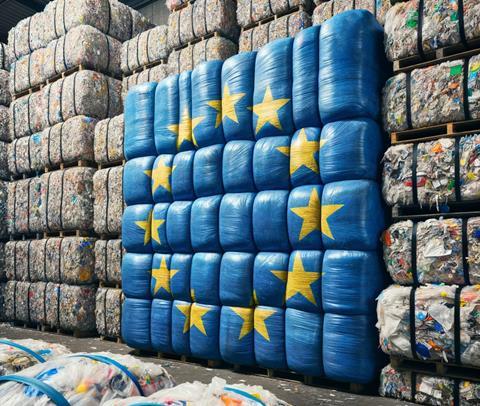
In the middle of the debate around the recent revisions to the EU’s Packaging and Packaging Waste Regulation, where many responses have focussed on the reuse vs recycle debate, are we missing the point? Mike Newman, CEO at Returnity Innovations, argues that a key consideration may have been overlooked: how will real consumers living real lives actually respond to the new rules?
Now that the European Parliament has advanced its new rules on packaging, it’s time to declare winners and losers from the epic showdown between Team Recycle and Team Reuse.
That was the contest, right? I’ve not been personally involved so I only get my information from reading LinkedIn posts. I’m excited to see who takes home the cup! (I’m sure it’s reusable. Or recyclable? Let’s make it both!)
The devolution of thought leaders and business executives into their respective camps has been fascinating if not surprising. This was always going to be a fight about money, market share and self-interest, no matter how hard the players tried to claim the environmental mantle.
As we should all know by now, manufacturing packaging that is reusable or recyclable is irrelevant if it isn’t reused or recycled. Yet that core truth seemed nearly irrelevant in the negotiations.
So here we are. Percentages are being codified. Formats are being obligated. And for many, it’s a huge missed opportunity because the percentages were too low and the required formats too lenient.
Meanwhile, one group seems to have been thoroughly left out of the conversation - actual consumers living actual lives.
It is profoundly difficult and expensive to change human behavior. We all have dozens of interactions with packaging every day. For the EU regulations to deliver on their goals, it will require a massive evolution in the choices we make. Will we?
That is the problem with making it an argument about packaging formats and formulations, because in 20 years we will look back and gauge success based not on reuse vs. recycle, but on what people did with the packaging when it reached their hands.
I’d be much more optimistic if we’d started with those harder questions, like will consumers change their behaviour, and if so, why? Why will they start properly recycling - or follow through on reuse - when they didn’t previously?
How much will it cost retailers and consumers to facilitate that behaviour change? How quickly will we see consumers follow through on this behaviour change such that we are actually reducing packaging impact?
For a recyclable package to succeed, consumers will need access to recycling infrastructure, and to use it. But that is only the start of the journey; there needs to be processing capacity for all that packaging, end markets for the materials - and an economic model that leads companies to choose the recycled content over virgin. After decades of stagnation in the recycling markets, this is in no way assured.
It’s even harder for reuse. EU consumers have had exposure to reusable eCommerce shipping packaging for over a decade. Yet even when it is opt-in, and even when the consumer pays a premium or a deposit, programs still struggle to exceed even 50% return rates - dramatically short of the 90%+ level that will be needed to realize meaningful resource reductions vs. single use. With the new obligation that 10% of shipments are sent in reusables by 2030, that is a huge gap to close - and we are woefully short on evidence that it is possible.
Brands and retailers have already begun evaluating their best pathways to compliance. They should pick the suppliers and partners that are willing to admit that it is going to be a difficult, expensive and lengthy process.
The real work is only just beginning. I believe the answers are out there - but only if we ask the right questions first.
If you liked this article, you might also enjoy:
The L’Oréal approach to packaging sustainability
The way we talk about plastic needs to change – here’s how to get it right
What steps is Apple taking to make its packaging more sustainable?












No comments yet